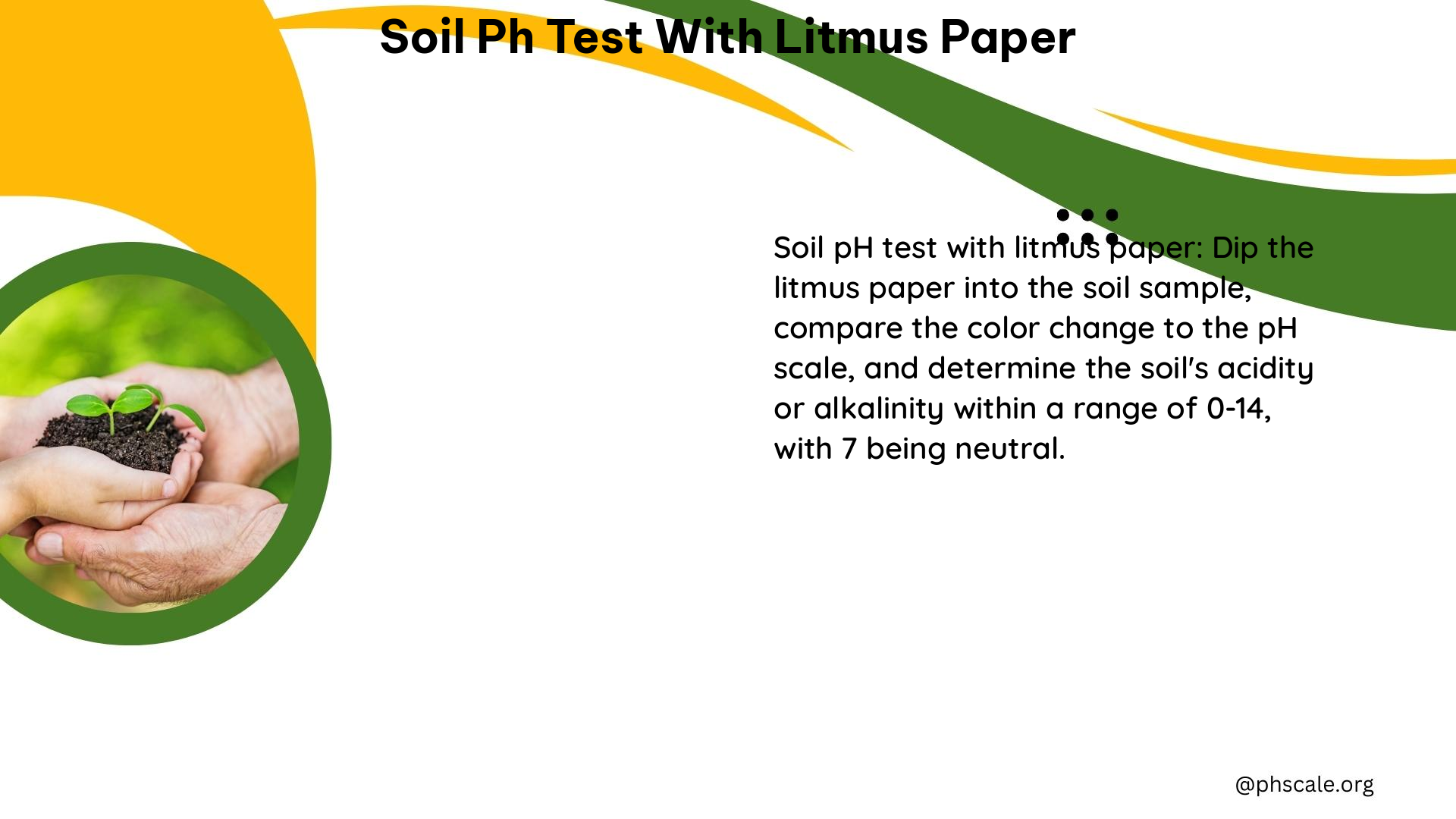Soil pH testing using litmus paper is a simple, affordable, and effective way to determine the acidity or alkalinity of your soil. This guide will walk you through the step-by-step process of conducting a soil pH test with litmus paper, understanding the results, and taking appropriate actions to balance your soil’s pH level.
Preparing the Soil Sample
-
Collect a Dry Soil Sample: Take a few ounces or grams of dry soil from the area you want to test. Ensure the sample is representative of the entire area.
-
Mix with Distilled Water: Place the soil in a jar and add distilled water in a 1:1 ratio. Stir the mixture well to create a slurry.
-
Let it Infuse: Allow the soil-water mixture to sit for a few hours or overnight to ensure any chemical reactions have settled.
Using Litmus Paper

-
Dip the Litmus Paper: Take a disposable litmus paper indicator and dip it into the prepared soil solution.
-
Wait for Color Change: The litmus paper will change color within a few seconds, indicating the pH level of the soil.
-
Compare to the Color Chart: Match the color of the litmus paper to the provided color chart to determine the pH level of your soil.
Understanding pH Levels
- Acidic: pH 5 and below (red to yellow color on litmus paper)
- Neutral: pH 6-7 (yellow to green color on litmus paper)
- Alkaline: pH 7 and above (green to blue color on litmus paper)
Tips and Considerations
- Use Distilled Water: Tap water can be alkaline and affect the test results, so it’s essential to use distilled water.
- Avoid Contamination: Ensure your hands are dry and do not touch the litmus paper to prevent contamination.
- Repeat the Test: Perform multiple tests to ensure accurate results and account for any variations in the soil sample.
Alternative Methods
While litmus paper is a simple and cost-effective method, there are other options for soil pH testing:
- Electronic Soil pH Tester: These devices measure the conductivity of the soil, which is affected by its acidity. They are more affordable than professional lab tests but may be less accurate due to moisture and water composition influences.
Common Contaminants and Substances
Several factors can affect the pH level of your soil, including:
- Tap Water: The alkaline properties of tap water can influence the test results.
- Synthetic Fertilizers: The use of synthetic fertilizers can increase soil acidity over time.
- Green Manuring: Incorporating green plants or mulch into the soil can increase its acidity.
Balancing Soil pH
If your soil pH test reveals an imbalance, you can take the following actions to adjust it:
- Add Lime: To reduce acidity in acidic soils.
- Add Organic Matter: To increase alkalinity in alkaline soils.
Helpful Resources
For further information and guidance on soil pH testing with litmus paper, consider the following resources:
- YouTube Tutorials: Detailed videos on using litmus paper for soil pH testing, such as How to Use pH Litmus Strips to Measure pH in Vegetable Garden Soil by Michael Ferrero.
- Gardening Forums: Discussions on soil pH testing and its importance, like Testing soil pH with litmus paper on The Lawn Forum.
- Gardening Guides: Comprehensive articles on soil pH testing and adjustment, such as How to test soil pH and adjust soil acidity on Gardeningtheme.com.
References
- How to Use pH Litmus Strips to Measure pH in Vegetable Garden Soil by Michael Ferrero.
- Testing soil pH with litmus paper discussion on The Lawn Forum.
- How to test soil pH and adjust soil acidity guide on Gardeningtheme.com.
- Checking Soil Acid Levels With PH Litmus Paper Test Strips by The DIY World.
- soil ph testing using litmus paper discussion on Houzz.
